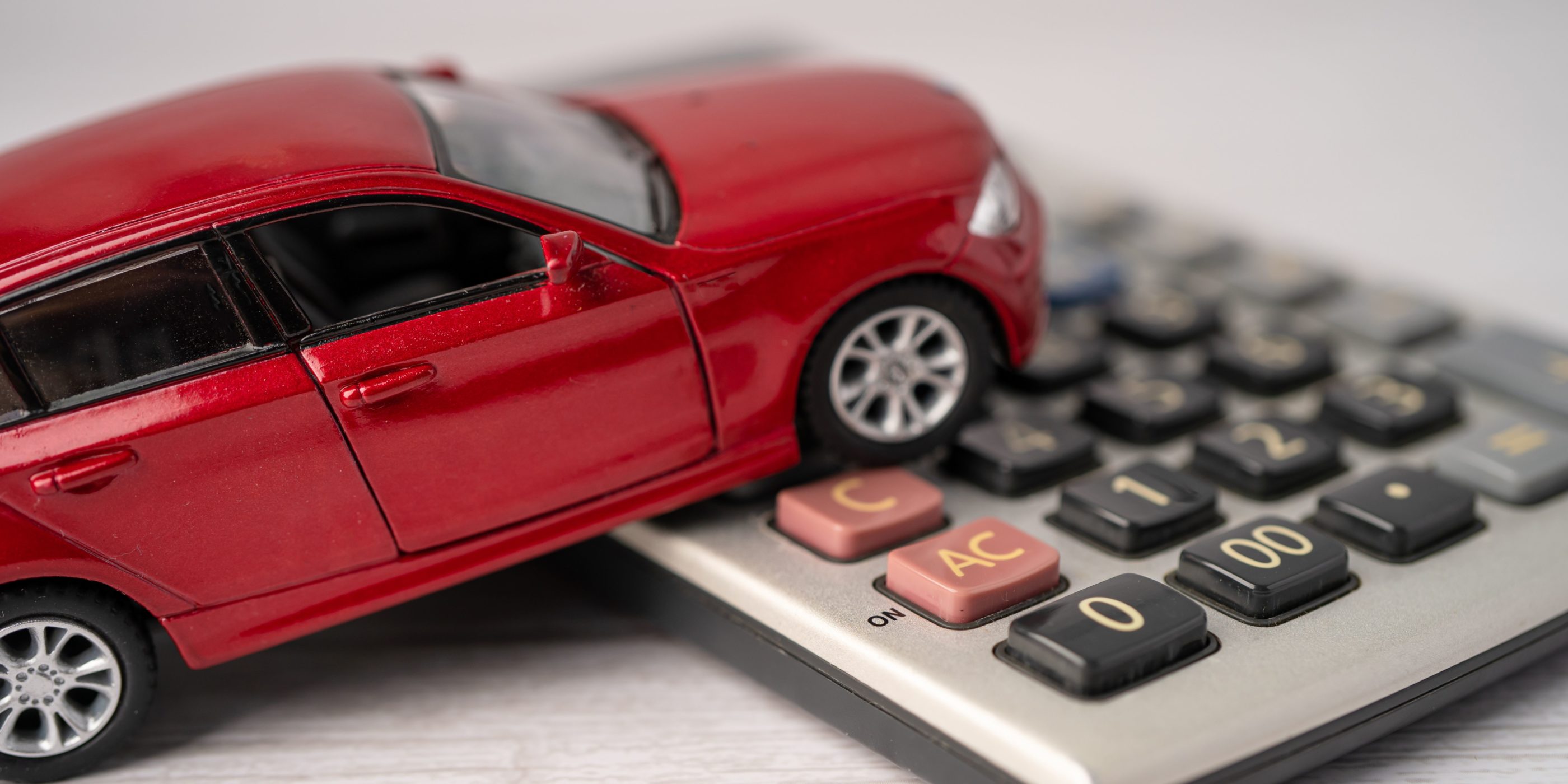Home>Finance>What General Rule Of Thumb Connects Your Car Payment And Your Monthly Savings Budget?


Finance
What General Rule Of Thumb Connects Your Car Payment And Your Monthly Savings Budget?
Published: January 16, 2024
Discover the connection between your car payment and monthly savings budget with our helpful finance tips. Get expert advice on managing your finances and achieving your financial goals.
(Many of the links in this article redirect to a specific reviewed product. Your purchase of these products through affiliate links helps to generate commission for LiveWell, at no extra cost. Learn more)
Table of Contents
- Introduction
- Understanding the Relationship between Car Payments and Monthly Savings
- Importance of Budgeting for Car Payments and Savings
- The 20/30/50 Rule: Connecting Car Payment and Monthly Savings Budget
- Steps to Implement the 20/30/50 Rule
- Common Challenges and How to Overcome Them
- Benefits of Following the General Rule of Thumb
- Conclusion
Introduction
When it comes to managing our finances, finding the right balance between car payments and monthly savings is crucial. Both play a significant role in our financial well-being, and understanding the relationship between these two aspects is essential for long-term stability and success.
Many people often overlook the connection between their car payments and their monthly savings budget, resulting in potential financial strain. This is why it’s important to establish a general rule of thumb that can guide us in making smart financial decisions.
In this article, we will explore the relationship between car payments and monthly savings, and highlight a practical general rule of thumb that can help us find the right balance. We will also discuss the steps to implement this rule and provide insights into common challenges and how to overcome them. By following this general rule of thumb, you can experience the benefits of financial stability and security.
So let’s dive in and learn how to connect your car payment and your monthly savings budget to achieve your financial goals.
Understanding the Relationship between Car Payments and Monthly Savings
Car payments and monthly savings are two essential components of our financial lives, and understanding their relationship is crucial for making informed financial decisions. The money we spend on car payments directly affects the amount we can allocate towards our monthly savings.
Car payments are the monthly installments we pay towards our auto loans or leases. These payments typically include the principal amount, interest, and any additional fees. On the other hand, monthly savings refer to the money we set aside each month for various purposes, such as emergency funds, retirement savings, or other financial goals.
The relationship between car payments and monthly savings is simple yet significant. Higher car payments mean less money available for savings, while lower car payments allow for more savings. It is essential to strike a balance between these two aspects to ensure financial stability and meet our saving goals.
Furthermore, the amount we can allocate towards our monthly savings depends on various factors, including our income, expenses, and financial obligations. It is essential to have a clear understanding of our financial situation and prioritize our needs and goals.
By recognizing and analyzing the relationship between car payments and monthly savings, we can make informed decisions that align with our long-term financial objectives. Next, we will explore a practical general rule of thumb that can guide us in finding the right balance between these two crucial components of our financial lives.
Importance of Budgeting for Car Payments and Savings
Budgeting plays a vital role in managing our finances effectively. It enables us to allocate our income wisely and make informed decisions about our expenses, including car payments and savings.
When it comes to car payments, having a budget helps us determine how much we can comfortably afford to spend on our vehicle. It prevents us from overspending or taking on excessive debt, ensuring that our car payments fit within our overall financial framework.
Similarly, budgeting for savings is equally important. By setting aside a portion of our income for savings, we create a financial safety net and work towards our long-term financial goals. It helps us build an emergency fund, save for retirement, or invest in other opportunities that can lead to financial growth.
Without proper budgeting, there is a risk of overspending on car payments, leaving little to no room for savings. This can lead to financial stress and inhibit our ability to reach our financial goals. Additionally, inadequate savings can leave us vulnerable to unexpected expenses or retirement challenges in the future.
By creating a budget that incorporates both our car payments and savings goals, we can ensure that our financial priorities are aligned. It allows us to track our expenses, make necessary adjustments, and find the right balance between car payments and savings.
Moreover, budgeting helps us make informed decisions when it comes to purchasing a new vehicle. It lets us evaluate the affordability of different car options, including the associated car payments, insurance costs, maintenance expenses, and fuel consumption. This ensures that we choose a vehicle that fits comfortably within our budget and minimizes financial strain.
In summary, budgeting is crucial for managing car payments and savings effectively. It helps us make informed financial decisions, prevent overspending, and ensure that we are on track towards our long-term financial goals. In the next section, we will introduce a practical general rule of thumb that connects car payments and monthly savings, providing a guideline for finding the right balance between the two.
The 20/30/50 Rule: Connecting Car Payment and Monthly Savings Budget
One practical general rule of thumb that can help us find the right balance between our car payments and monthly savings is the 20/30/50 rule. This rule suggests allocating a specific percentage of our income to different financial categories.
According to the 20/30/50 rule, 20% of our income should be allocated towards savings, 30% towards essential expenses, including housing, utilities, food, and healthcare, and 50% towards non-essential expenses, such as entertainment, dining out, and discretionary purchases. The 30% category also includes our car payment.
By connecting our car payment with the 30% essential expense category, the 20/30/50 rule ensures that our car payment remains within a reasonable range, taking into account our overall financial obligations and goals.
It is important to note that the 30% category includes not only the car payment but also other essential expenses. Therefore, when determining the amount you can afford for your car payment, it is crucial to consider the total amount of essential expenses within the 30% bracket.
Following the 20/30/50 rule allows us to prioritize our savings while ensuring that our car payment is manageable within our broader financial framework. It encourages responsible spending, prevents overcommitting to car loans or leases, and ensures that we have the necessary funds available for savings and other financial goals.
Additionally, the 20/30/50 rule provides flexibility based on our individual financial circumstances. It allows us to adjust the percentages according to our specific needs and goals, as long as we maintain a balanced approach to our finances.
Implementing the 20/30/50 rule requires careful budgeting and tracking of expenses. By monitoring our spending and adhering to these percentages, we can maintain financial stability, ensure adequate savings, and optimize our car payments within our overall financial picture.
In the next section, we will outline the steps to implement the 20/30/50 rule effectively, helping us achieve a healthy balance between our car payments and monthly savings budget.
Steps to Implement the 20/30/50 Rule
Implementing the 20/30/50 rule in your financial management requires careful planning and adherence to specific steps. By following these steps, you can effectively connect your car payment with your monthly savings budget:
- Calculate your income: Begin by determining your total monthly income. This includes all sources of income, such as salaries, bonuses, investments, or side hustles. Having a clear understanding of your income is essential for allocating the appropriate percentages to different financial categories.
- Define your essential and non-essential expenses: Categorize your expenses into essential and non-essential categories. Essential expenses include housing, utilities, food, healthcare, and your car payment. Non-essential expenses include entertainment, dining out, travel, and discretionary purchases.
- Allocate percentages: Apply the 20/30/50 rule to determine the percentage of your income to allocate towards savings, essential expenses (including your car payment), and non-essential expenses. Adjust the percentages if needed, based on your individual financial situation and goals.
- Calculate your car payment: Within the 30% essential expense category, determine the portion that will go towards your car payment. Consider any additional costs such as insurance, maintenance, and fuel expenses associated with owning a vehicle.
- Create a budget: Develop a detailed budget that incorporates the allocated percentages for each financial category. This will guide your spending and ensure that your car payment and savings goals are integrated into your financial plan.
- Track your expenses: Monitor your spending regularly to ensure that you are sticking to your budget. This will help you identify any areas where adjustments may be necessary and allow you to make informed decisions about your financial priorities.
- Review and adjust: Regularly review your budget and assess your progress towards your savings goals. Adjust the percentages if needed to accommodate any changes in your income, expenses, or financial priorities.
By following these steps, you can effectively implement the 20/30/50 rule, connecting your car payment with your monthly savings budget. This systematic approach to financial management will help you maintain financial stability, allocate funds towards savings, and make informed decisions about your car payments.
Next, we will discuss some common challenges that individuals may encounter when trying to implement this rule and provide strategies to overcome them.
Common Challenges and How to Overcome Them
Implementing the 20/30/50 rule and finding the right balance between car payments and monthly savings can pose challenges for many individuals. However, with proper strategies and perseverance, these challenges can be overcome. Here are some common challenges and strategies to overcome them:
- Temptation to overspend: One common challenge is the temptation to overspend on non-essential expenses, which can impact your ability to allocate sufficient funds for savings and your car payment. To overcome this challenge, it’s important to prioritize your financial goals and practice self-discipline. Consider setting specific savings targets and implementing strategies like using cash envelopes or automated savings transfers to avoid the temptation to overspend.
- High car payments: Another challenge is dealing with high car payments that may make it difficult to allocate funds for savings. If your car payment is consuming a significant portion of your essential expense category, it may be necessary to consider alternatives such as refinancing your loan, downsizing to a more affordable vehicle, or exploring leasing options. Additionally, reassessing your budget and finding areas to cut expenses can help free up funds for savings.
- Unexpected expenses: Unexpected expenses can often derail your budget, leaving little room for savings. It’s crucial to build an emergency fund to handle unforeseen costs. By having an emergency fund, you can address unexpected expenses without compromising your car payment or dipping into your savings. Aim to set aside three to six months’ worth of living expenses as an emergency fund.
- Inconsistent income: Irregular or inconsistent income can make it challenging to adhere to the 20/30/50 rule. In such cases, it is important to budget based on your average monthly income and adjust your allocation percentages accordingly. During months of higher income, prioritize building your savings, while during leaner months, focus on meeting essential expenses and maintaining your car payment.
- Lack of financial awareness: Many individuals struggle with a lack of financial awareness, which can hinder effective budgeting and financial decision-making. Overcome this challenge by dedicating time to educate yourself about personal finance. Read books, take online courses, or seek guidance from financial professionals who can provide valuable insights and help you make informed choices.
By addressing these common challenges and implementing the respective strategies, you can overcome obstacles along the way and successfully implement the 20/30/50 rule. Remember, it requires discipline, perseverance, and a willingness to make necessary adjustments to achieve your financial goals.
In the next section, we will discuss the benefits of following the general rule of thumb, connecting car payments and monthly savings budget.
Benefits of Following the General Rule of Thumb
Following the general rule of thumb that connects car payments and the monthly savings budget offers several benefits that can significantly improve your financial well-being. Let’s explore the advantages of implementing this rule:
- Financial stability: By allocating a specific percentage of your income towards savings, you create a financial safety net. Having savings provides a cushion for unexpected expenses, reduces financial stress, and contributes to overall financial stability.
- Controlled debt levels: Implementing the 20/30/50 rule ensures that your car payment remains within a manageable range, preventing excessive debt. This allows you to stay on top of your financial obligations and avoid potential financial strain in the future.
- Smart financial decisions: The rule encourages responsible spending by setting boundaries for essential and non-essential expenses. By adhering to these boundaries and making informed decisions, you can prioritize your financial goals and avoid unnecessary purchases or overspending.
- Building long-term wealth: Allocating a portion of your income towards savings allows you to build wealth over time. The savings can be invested or used to achieve significant financial milestones such as paying off debt, purchasing a home, or planning for retirement.
- Flexibility and customization: While the 20/30/50 rule provides a general guideline, it also allows for customization based on your individual financial circumstances. You can adjust the percentages according to your needs and goals, allowing for flexibility while still maintaining a balanced approach.
- Peace of mind: Following the general rule of thumb gives you peace of mind knowing that you are on track with your finances. It instills a sense of confidence and control over your financial future, allowing you to focus on other aspects of your life without constant financial worry.
Overall, adhering to the general rule of thumb connecting car payments and the monthly savings budget offers numerous benefits. It helps you achieve financial stability, make smart financial decisions, build wealth, and enjoy peace of mind knowing that you are managing your finances responsibly.
Now that you understand the benefits, it’s time to put this rule into practice and take control of your car payments and savings. In the next section, we will conclude our discussion and summarize the key points.
Conclusion
Managing your car payments and monthly savings is essential for maintaining a healthy and stable financial life. By understanding the relationship between these two aspects, you can make informed decisions and find the right balance. The general rule of thumb connecting car payments and the monthly savings budget, such as the 20/30/50 rule, provides a practical guideline to guide this process.
Through careful budgeting and allocation of percentages, you can ensure that you are setting aside enough money for your car payments while still prioritizing savings. This rule allows for flexibility and customization based on your individual financial circumstances, making it adaptable to different situations.
Implementing the 20/30/50 rule requires discipline, commitment, and a willingness to adjust your spending habits. Overcoming common challenges such as overspending, high car payments, and inconsistent income is crucial for successfully following this rule. By taking control of your finances and following the rule, you can enjoy the benefits of financial stability, controlled debt levels, and the ability to build long-term wealth.
Remember, budgeting is an ongoing process that requires regular reviewing and adjustments. Stay proactive and monitor your expenses, making sure that your car payments and savings goals stay aligned with your financial plan.
By following the general rule of thumb connecting car payments and the monthly savings budget, you can find financial peace of mind and work towards achieving your long-term financial goals. Take the first step today by assessing your financial situation, creating a budget, and implementing the 20/30/50 rule. Your financial future starts with making proactive choices and prioritizing your financial well-being.














